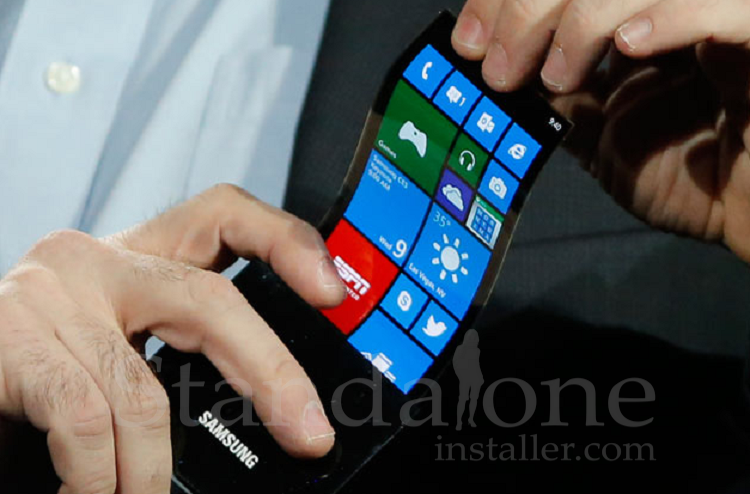What to expect in Future Smartphones?
- Admin
- December 29, 2016
- 827
Smartphones are packed with extraordinary capabilities. Compared to common mobile phones, they are much smarter, offering additional functions such as web browsing, multimedia entertainment, games and much more. They are no less pocket size computers, helping us do things, communicate and stay entertainment anywhere anytime. Smartphones come to us about 2 decades back. These devices have greatly evolved overtime. Started out as simple devices to help us write messages and make voice calls, smartphones of today offer a lot more including great mobile apps, in-built high-quality camera lenses, video-streaming etc.
What should we expect to see in the future smartphones? Well, it is not very easy to predict what other stuff these powerful devices will be offering us in times to come but we can surely make guesses based on the existing trends.
1. Flexible Screens

Smartphones of the future may have flexible case. We may see smartphones offering a large screen to watch and play movies and games while maintaining a pocket size. They may get the capability of being folded and unfolded. Thanks to Organic Light-Emitting Diode (OLED) technology. This paper-thin screen has the power to project future-features-smart-phones from both sides of the screen. It means that you can show pictures or videos to other on one side while using the other as a control.
2. Augmented Reality (AR)

When used in the context of computer technology, AR refers to what we perceive through our senses mostly sight improved via computer-generated sensory input like video, sound, video, graphics in addition to GPS data. In other words, AR makes available more information for us by combining computer data to what we see in real life. With the help of the phone’s camera you can point it at a place ‘live’ in order to get an information overlay of where you can find the closest restaurants, cafes etc. Smartphones make great platform for AR as they are portable. You can simply use your device to get the latest and relevant information about anything you want. Most AR apps make use of some type of Global Positioning System (GPS) to aid location searches. This capability is expected to improve further in near future. Why isn’t it already a part of current smartphones so far? Well, the main factor that has not allowed us to make the most of this technology so far is its limited recognition accuracy for ‘live’ views when we point our phone’s camera at a locations, buildings or people. In order to work well and accurately, the technology for recognizing places or people must have a certain standard. We are likely to have more AR apps in future so be prepared. Flexible Screens. Smartphones of the future may have flexible case. We may see smartphones offering a large screen to watch and play movies and games while maintaining a pocketable size. They may get the capability of being folded and unfolded. Thanks to Organic Light-Emitting Diode (OLED) technology. This paper-thin screen has the power to project future-features-smart-phones from both sides of the screen. It means that you can show pictures or videos to other on one side while using the other as a control.
3. 3D Screens & Holograms

With ‘Retina Display’ of Apple, Smartphones may have touched the pinnacle of their screen resolution that offers a resolution sharper than what our eye can perceive. But we want more. Mobile companies are now making a transition from 2D future-features-smart-phones/ to 3D future-features-smart-phones/ for the smartphone screen. We do some 3D smartphones out there presently like the LG Optimus 3D, the Motorola MT810 in addition to the Samsung AMOLED 3D. The next step might be holographic projections that mean a combination of 3D future-features-smart-phones/ and projections from the device. MasterImage 3D had showcased their ongoing development on a projection system that enables smartphones to display 3D holograms at the Mobile World Congress. The holographic projections in smartphones is superb. 3D displays can be integrated with movement elements when it comes to user interactions with the device. Like you can resize your photos with the help of your hands to ‘pull’ or ‘compress’ the holographic photos that appear right in front of you or move objects by ‘grabbing’ them and more.
4. In-Built Projector

A projector within the smartphones is another feature that is possible in the future smartphones. Samsung Galaxy Beam was launched in 2010 that featured a built-in DLP (Digital Light Projection) WVGA projector that could project the future-features-smart-phones at up to 50 inches in size at 15 lumens. Future smartphones may even act as an interactive gaming consoles without calling for a TV screen. In place of a physical controller, you may make use of your voice or body. Like Kinect, a smart camera and a voice control function may capture your movements and voice to enable you to interact with objects on the projected screen.
While it is certainly exciting to expect all these wonderful features in future smartphones, will we actually be getting them? Must our privacy be compromised for AR? Let us keep your fingers crossed!





